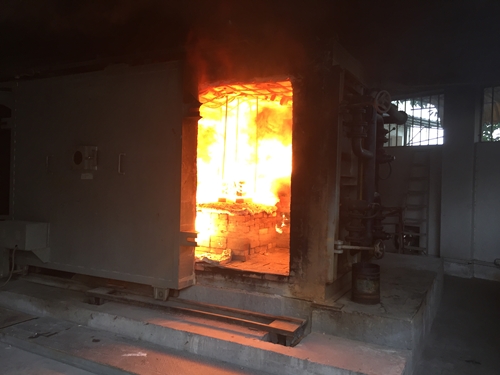Everyone and every organization need their belongings and valuables protected from fire and the fireproof safe was invented to protect against the peril of fire. The basis on the construction of fireproof safes hasn’t changed much since the late 19th century. Even today, most fireproof safes consists of multi-walled body and the cavity in between is filled with a fire resistant material. Although, before getting to this design, safe makers tested with many different ways to make their safes fireproof.
The earliest safes were wooden chests with iron bands and sheets to make them stronger but have little or no protection against fire. Later on, the iron safes also provide similar security protection but nothing against fire. However, offices, banks and the rich needed a safe that would keep ledges, paperwork and other valuables protected from fire. With that in mind, a series of advances began for safe makers on both sides of the Atlantic.
One of the first fireproof techniques was patented in the US by Jesse Delano in 1826. He build a safe with a wooden body covered with metal. Wood was treating with a mixture of materials such as clay and lime and plumbago and mica or potash lye and alum. In 1833, safe builder CJ Gayler patented the double fireproof chest which was a chest within a chest and the gap in between was filled with a non-conductive material. Around the same time another safe builder, John Scott, patented the use of asbestos for his fireproof chests.
The first British patent for fireproofing a chest was done by William Marr in 1934 and involved lining the walls with mica or talc and then fire retardant materials such as burned clay or powdered charcoal would be packed into the gaps between the layers. Chubb patented a similar method in 1838. A competing builder, Thomas Milner may have been building a fireproof safe as early as 1827 but did not patent a fireproofing method until 1840 where he filled small pipes with an alkaline solution that was distributed throughout a non-conductive material. When heated, the pipes burst soaking the surrounding materials to keep things moist and the inside of the safe cool.
Advances were made in the US when in 1943, Daniel Fitzgerald patented the idea of using plaster of Paris, which he discovered was an effective insulating material. This patent was later assigned to Enos Wilder and the patent was best known as the Wilder patent. This formed the basis of fireproofing safes in US for years to come. Herring & Co’s built a safe based on the Wilder patent that won an award at The Great Exhibition held in Crystal Palace in 1951.
In the 1900’s, the Underwriters Laboratory of America established independent tests to measure the fire resistance of safes (today’s standard would be the UL-72). The establishment of standards drove changes in construction of fire safes, especially in the body work, where companies had to redesign to achieve tighter joins between the door and the body and to prevent safes from expanding and buckling in high temperatures due to steam generated by the fireproof insulation. Advances since the testing also included the use of thinner steel to prevent heat being transferred from the exterior to the interior.
Asbestos were used in fireproof safes in the US until around the 1950s and now most fireproof safes made by a reputable manufacturer feature some form of composite material. There are companies now that offer cheap safes using some form of fireboard, although lighter and cheaper, they are not as fire resistant to safes that uses traditional safes that uses the composite material.
Guarda safe entered into the fireproof safe scene with the development of our own fireproof safe in 1996, using our own patented composite insulation material technology. The dual action of the insulation allows absorption and blocking of heat. Our contributions to the advances in the history of fireproof safes also include developing the first polymer casing cabinet fireproof safe in 2006. Waterproof functions have also been added to our lineup of safes to guard against the water damage, be it from floods or from fighting a fire. We are a professional maker of fireproof safes because that is our main focus. The one-stop-shop service provides end-to-end development process from design, to testing, to manufacturing can be all done in-house. We partner with some of the biggest names in the world that utilizes our know-how and insulation technology so that we can provide the protection that people need for their valuables in the past, in the present and in the future.
Source: Inventing the fireproof safe “http://www.historyofsafes.com/inventing-the-fireproof-safe-part-1/”
Post time: Oct-25-2021



